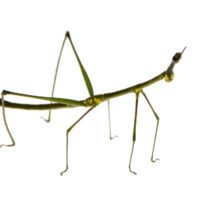Are Stick Insects Boring?

Stick insects are fascinating creatures renowned for their mastery of camouflage. They can mimic twigs, leaves, and even swaying branches, seamlessly blending into their surroundings to evade predators. This adaptation not only showcases their impressive biological capabilities but also underscores the critical role camouflage plays in their survival strategies. Moreover, with approximately 3,000 species worldwide, stick insects exhibit a remarkable diversity of shapes, colors, and sizes. This extensive variety highlights their evolutionary adaptations and provides researchers with a rich tapestry of biological exploration.
Many stick insects employ parthenogenesis, a form of asexual reproduction where females can lay fertile eggs without mating with males. This unique reproductive adaptation ensures their resilience in environments where males may be scarce or absent, emphasizing their ability to thrive independently. Additionally, young stick insects possess the remarkable ability to regenerate lost limbs over several molts, enhancing their ability to cope with injuries in their natural habitats. Their complex behaviors, such as mimicking wind-blown branches and engaging in prolonged mating rituals, further illustrate their adaptability and survival strategies in response to environmental challenges.
What unique adaptations do stick insects have?
Stick insects possess remarkable camouflage abilities, mimicking twigs, leaves, and even the swaying motion of branches to blend perfectly with their surroundings. This adeptness provides them with protection from predators. Certain species are capable of changing their color to match their environment, further enhancing their stealth. In addition to their camouflage skills, stick insects communicate through pheromones, which facilitate mating and social interactions.
With approximately 3,000 species found worldwide, stick insects exhibit a diverse array of shapes, colors, and sizes, ranging from twig-like forms to those that resemble leaves. This diversity highlights the extensive evolutionary adaptations of these insects.
Many stick insects reproduce through parthenogenesis, a process where females can lay eggs without mating.
Stick insects sway to mimic the movement of wind-blown branches, further augmenting their camouflage.
During mating, stick insects engage in prolonged behaviors where males remain attached to females for extended periods, potentially offering protective benefits.
Young stick insects have the ability to regenerate lost limbs. A new limb gradually grows back over several molts, although it may be shorter than the original. However, adult stick insects cannot regenerate lost limbs but can continue to thrive without them.
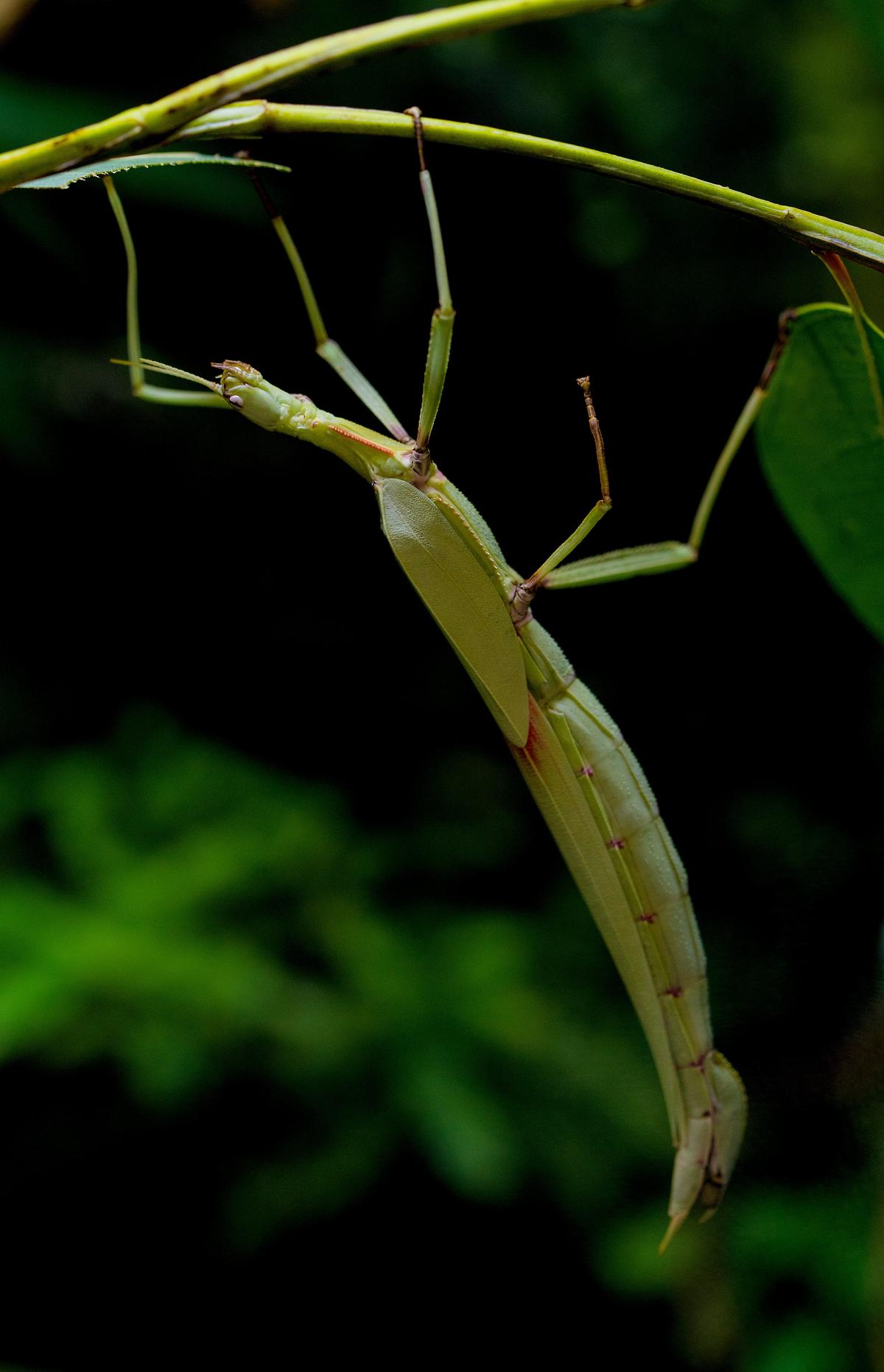
Photo by davidclode on Unsplash
How diverse are stick insects?
With around 3,000 species worldwide, stick insects display an astounding variety of shapes, colors, and sizes, showcasing their evolutionary ingenuity. They range from twig-like forms that seamlessly blend into their forest homes to those that mimic leaves with incredible precision, complete with vein patterns and varied hues.
Highlighting their diversity:
- Some species are bright green and visually similar to foliage
- Others adopt brown or even mottled appearances that resemble dried leaves or bark
- Some species can change color, adapting their appearance to better match their surroundings
This incredible ability isn’t just for adult stick insects; even the young, or nymphs, can exhibit remarkable camouflage right from hatching. This color variation helps stick insects thrive in a wide range of environments, from lush rainforests to arid shrublands, demonstrating their extraordinary adaptability.
Besides visual diversity, stick insects also exhibit a variety of behaviors. Some species sway back and forth to mimic the movement of leaves in the breeze, an adaptation believed to enhance their camouflage. Others might remain perfectly still for hours, relying on their natural disguise to avoid detection.
The diversity of stick insects extends beyond their appearance and behavior to their life cycles and reproductive strategies. While many species reproduce through parthenogenesis, others require mating, and some exhibit prolonged copulation that can last days or weeks.
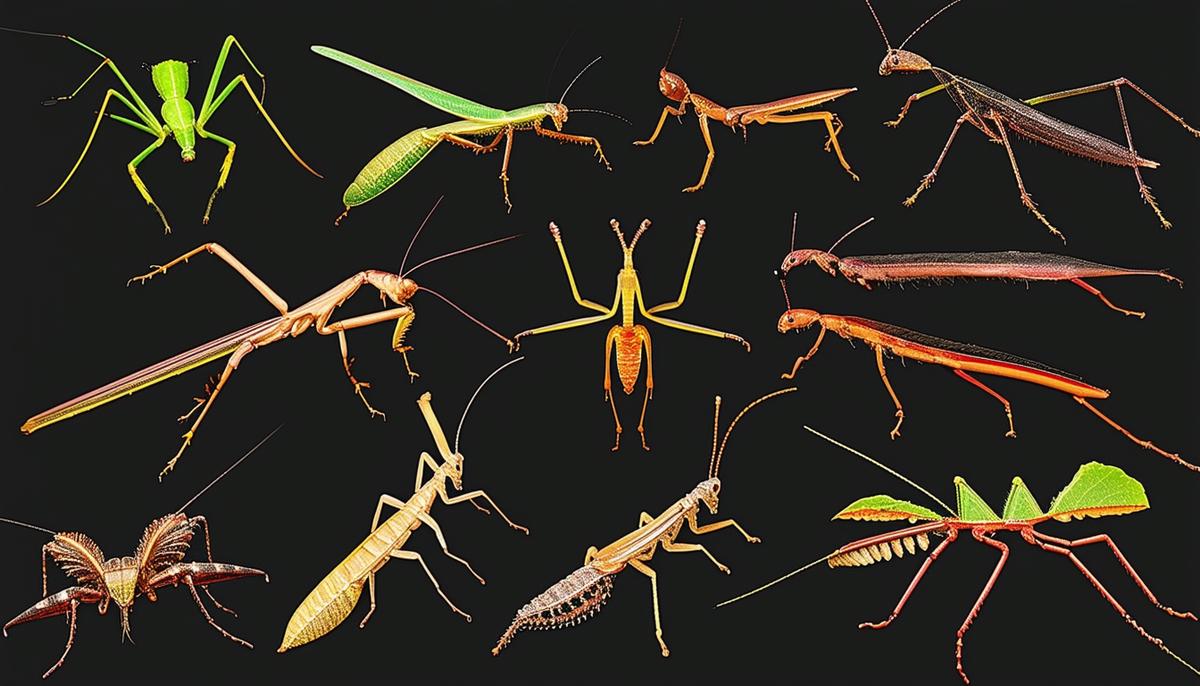
Can stick insects reproduce without mating?
Parthenogenesis, an extraordinary reproductive adaptation, enables many stick insects to lay fertile eggs without mating with a male. This unique form of asexual reproduction ensures that populations can thrive, especially in environments where males are scarce or entirely absent. Females capable of parthenogenesis produce offspring that are genetically identical to themselves, ensuring the continuity of their lineage.
This reproductive strategy bolsters the resilience and adaptability of stick insect populations. In ecosystems where predators or environmental pressures might otherwise jeopardize their survival, the ability to reproduce autonomously without males provides a critical advantage. This means that isolated females can independently give rise to entire new generations, thereby maintaining and potentially increasing population numbers.
For instance, many species of the genus Acanthoxyla, found predominantly in New Zealand, are known to reproduce exclusively through parthenogenesis. Over successive generations, these species have maintained their populations without the need for males, an efficient adaptation in fluctuating environments.
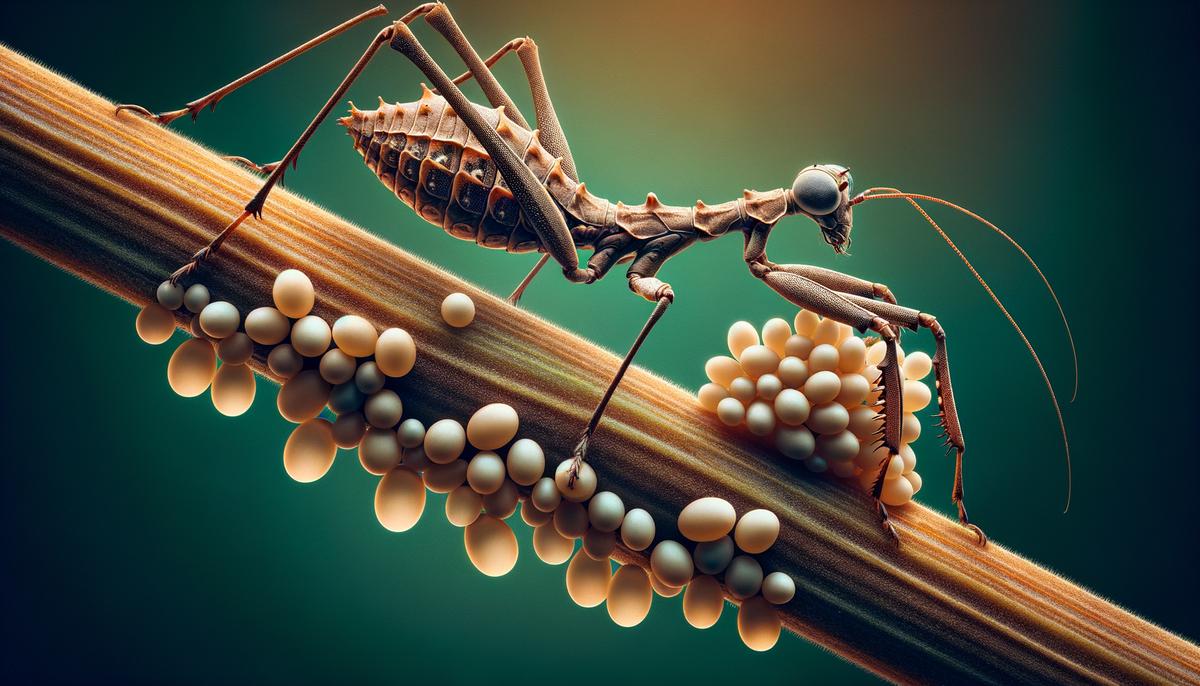
What behaviors make stick insects interesting?
One of the most intriguing behaviors of stick insects is their approach to mating. Some species engage in prolonged copulation, which can last for days, weeks, or even months. This extended period of mating ensures that the male’s sperm has the best chance of fertilizing the female’s eggs, thereby maximizing reproductive success. Additionally, it may provide the female with some level of protection, as the smaller male perched on her back can act as a decoy or shield against potential predators.
Another captivating behavior is the rocking motion exhibited by many stick insects. When disturbed or sensing potential danger, they sway back and forth in a rhythmic manner, mimicking the movement of leaves or branches swaying in the wind. This motion enhances their camouflage, making them appear as part of the plant and thus helping them evade predators.
Stick insects also exhibit interesting predatory evasion tactics:
- Certain species will drop to the ground and remain motionless when threatened, blending seamlessly with the leaf litter and twigs.
- This tactic makes it exceedingly difficult for predators to spot them, offering these insects an added layer of security.
- Some species possess defensive mechanisms like the ability to secrete chemical deterrents to ward off attackers.
What is the educational value of stick insects?
Stick insects provide a unique and engaging educational experience in schools and research settings, particularly in the study of evolution, adaptation, and environmental science. Their extraordinary camouflage skills serve as a compelling example of natural selection at work. Students can visually witness how these insects have evolved to blend into their surroundings, learning firsthand about the survival benefits of mimicry and the pressures driving such adaptations.
These insects are ideal for studying environmental adaptation. They demonstrate a range of behaviors and physical characteristics tailored to specific habitats, from their twig-like appearances to their ability to sway like branches caught in the breeze. These features offer rich material for lessons on how organisms adapt to their environments for survival.
Their reproductive strategies, such as parthenogenesis, provide a clear example of genetic and reproductive adaptations to ensure species survival under varying environmental conditions. In educational settings, examining such reproductive methods can spark discussions about genetic diversity, population dynamics, and the role of sexual versus asexual reproduction in evolutionary processes.
The life cycle of stick insects is an excellent tool for teaching about development and growth. Observing nymphs as they molt and grow provides a tangible way for students to learn about insect life stages, the importance of molting, and the biological mechanisms behind growth and regeneration. The fact that young stick insects can regenerate lost limbs introduces concepts of cellular regeneration and biological repair, enriching lessons in biology and anatomy.
In research, stick insects contribute to our understanding of ecological interactions and biodiversity. Their role in food webs, their interactions with plants, and their susceptibility to environmental changes make them valuable subjects for ecological and environmental studies. Researchers can study how stick insect populations respond to environmental stresses, offering insights into the broader impacts of climate change and habitat destruction.
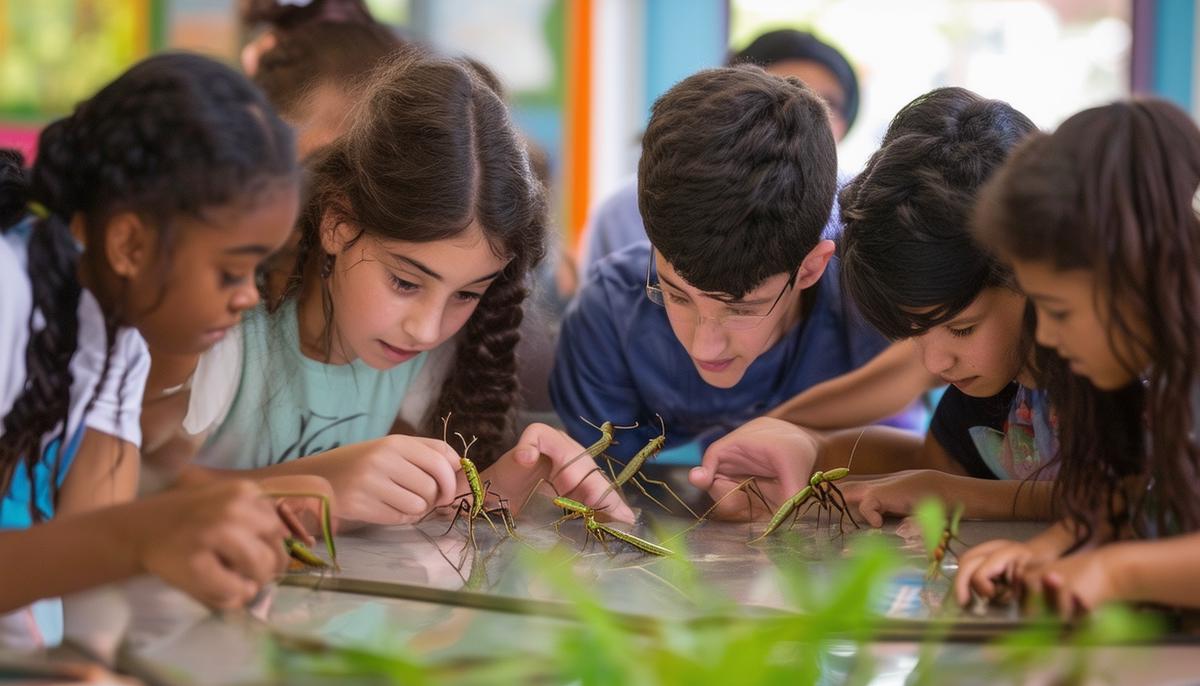
How common and visible are stick insects in nature?
Stick insects are masters of disguise, often hidden in plain sight due to their remarkable camouflage. Despite their abundance in various habitats, spotting them can prove to be a challenging task. Their twig-like or leaf-mimicking appearances allow them to blend seamlessly with their surroundings, making them nearly invisible to the casual observer.
Even seasoned naturalists and enthusiasts who specialize in spotting insects often find it difficult to locate stick insects. An experienced biologist shared an anecdote from their time in the prairies of Garden County, Nebraska. While they were proficient at identifying various insects like grasshoppers and spiders, they seldom noticed stick insects in their natural habitat. It wasn’t until they inadvertently gathered hundreds of these elusive creatures in a seed stripper machine that their true abundance became evident.
Another tale recounts a biologist’s encounter with stick insects in the Kaimai Range, New Zealand. While exploring the forest tracks, the biologist and his wife found several species of stick insects, including juveniles, in late autumn. Intriguingly, these insects were spotted in cold conditions, nestled in vegetation alongside frosty hollows. The couple’s diligent search in the shaded forest underscored the incredible concentration and effort required to find these camouflaged insects.
Stick insects’ nocturnal habits further reduce their visibility. They tend to be more active at night, leaving the relative safety of their daytime hiding spots to forage and move about. This nocturnal activity adds another layer of difficulty to spotting them.
Occasionally, stick insects venture into open spaces, making them slightly easier to spot. One biologist observed stick insects riding on the backs of bison and even found one on their own back. These encounters, while rare, provided opportunities to photograph and study the insects up close, away from their usual hiding spots in vegetation.
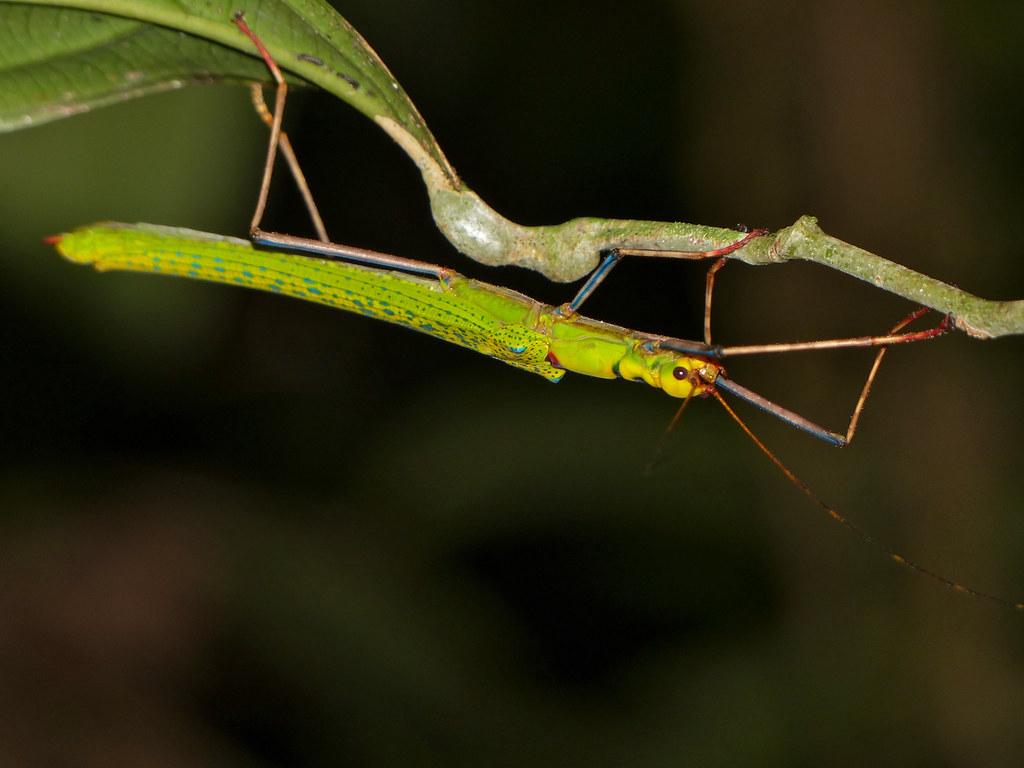
Can stick insects regenerate lost limbs?
Young stick insects, or nymphs, possess the remarkable ability to regenerate lost limbs, showcasing an extraordinary feat of nature’s resilience. This regenerative power is limited to nymphs as they undergo multiple molts throughout their growth.
The regeneration process:
- When a nymph loses a leg, its body initiates a complex process to regenerate the lost limb.
- During molting, the new leg begins to form within a protective skin.
- The new limb eventually emerges and develops into a fully functional appendage.
- Regeneration typically requires several molting cycles for the limb to reach its full size and functionality.
- With each successive molt, the new leg grows larger, gradually resembling the other, undamaged legs in both form and function.
The regenerative process in stick insects demonstrates their remarkable adaptability. From a biological perspective, this capability ensures that a young stick insect can continue to thrive and function effectively even after losing a limb. It enhances the insect’s chances of survival in its natural habitat, where predators, accidents, and other dangers are constant threats.
As these nymphs develop into adults, their capacity for regeneration diminishes. Once an insect reaches adulthood, it no longer molts, which means any lost limbs cannot be replaced. Nonetheless, adult stick insects can still lead productive lives despite missing a leg, thanks to their adaptable nature and overall resilience. They continue their routine activities, such as feeding, mating, and evading predators, effectively compensating for the missing appendage.
Research into the regenerative mechanisms of stick insects can offer valuable insights into broader biological processes. Understanding how these insects regrow lost limbs provides a glimpse into cellular regeneration and the roles of specific genetic and molecular pathways. Such knowledge might contribute to advancements in medical science, particularly in the fields of tissue engineering and regenerative medicine.
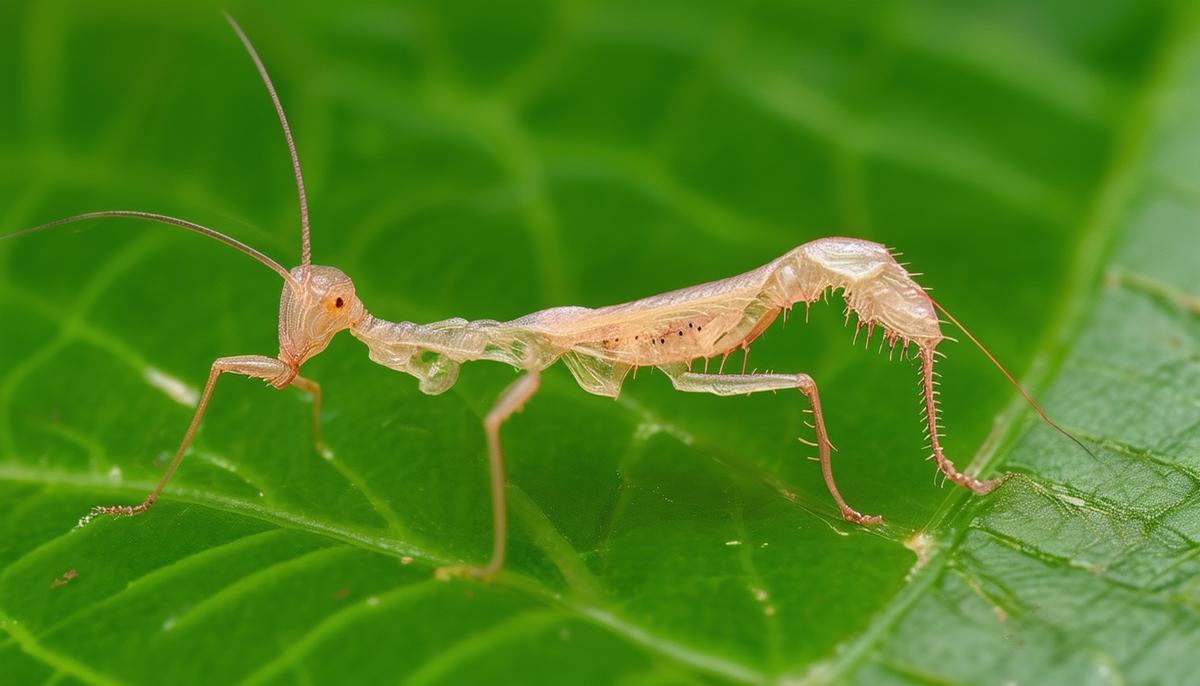
Do Stick-insects make good Workplace pets?
Stick insects may not be suited as workplace pets for several reasons. First, they do not offer the interactive companionship that many seek from pets in an office setting. Stick insects are solitary creatures that do not actively seek out human interaction, which may not fulfill the desire for companionship and social engagement that other pets like dogs or cats provide. Additionally, their stationary and slow-moving nature means they do not contribute to the dynamic and lively atmosphere that many workplaces aim to cultivate with pets.
Moreover, stick insects require specific care that may not align with the practicalities of a workplace environment. While they are generally low-maintenance in terms of feeding and cleaning, they still need a controlled habitat with appropriate humidity levels and specific dietary needs, such as fresh leaves. Furthermore, considerations such as workplace policies, potential allergies, and comfort levels of colleagues must be taken into account. Some people may have allergies to insects or feel uneasy around them, which could create discomfort or even conflict in a shared workspace. Therefore, while stick insects are fascinating creatures with unique adaptations, they are typically not considered suitable as workplace pets due to their limited interaction and specific care requirements.
In summary, stick insects captivate researchers and enthusiasts alike due to their intricate adaptations, diverse species, and intriguing behaviors. Their ability to blend seamlessly into diverse environments, reproduce autonomously, and exhibit unique biological features underscores their significance in ecological and evolutionary studies.
